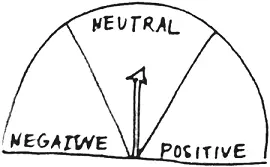Our insights are based on deep academic and professional research on the topic of virtual leadership, coupled with our fieldwork from partnering with many of the most successful CEOs, business leaders, and organizations around the world. We have interviewed (virtually, of course) over 100 CEOs, CHROs, and top business leaders for this book, surveyed thousands of individuals and companies, and applied our own observations as practitioners advising boards and companies on leadership selection, executive assessment and development, CEO succession, and board governance.
Luckily, there are effective ways both to work and to lead at a distance. And in the coming years, we believe that leaders’ ability to master these skills of leadership will mean the difference between individual and organizational success and failure.
Accelerating an Existing Trend: Virtual Work Is Here to Stay
To set the stage, let us share some foundational data. Prior to COVID-19, our survey of HR and talent leaders from over 150 companies showed that virtual work was not a rare phenomenon – 13% of the workforce, on average, was considered fully remote. When we resurveyed CHROs and rewards and talent leaders over a span of two weeks in July and August 2020 in which leaders from 55 organizations participated, that percentage skyrocketed to over 60% at the end of March 2020 and reached well in excess of 80% as of August 2020.
Looking ahead, these same HR and talent leaders anticipate that nearly half of their employees will continue to work from home even when things have stabilized. Another study by Northeastern University's Experience magazine 1 found that 80% of employees who were new to remote work reported that they wanted to continue to work remotely at least part time in the future (although only 15% said they would want to do so full time), and those who had already been working remotely before COVID-19 were even more enthusiastic about continuing to work remotely.

A 2020 McKinsey and Leanin.orgWomen in the Workplace report 2 showed that the COVID-19 crisis led many organizations to rethink remote work. The report indicated that 93% of companies say that more jobs can be done remotely, and 67% predict many employees will regularly work remotely in the future. Further, almost 8 in 10 employees reported that they want to continue to work remotely more often than before.
The point is that virtual work is no longer a temporary phenomenon in our lives, but rather a long-term transformation in how millions of people will work and how most organizations will function. Virtual work is here to stay.
A Tale of Three Perspectives
One of the most extraordinary things about the rapid shift to remote work in early 2020 was how universal it was. No matter who you talked to, nearly every professional who normally works in an office was going through the shift to remote work together. Those who were not making the shift were risking their lives as first responders or continuing their duties as essential workers – and for all these heroes, we are deeply thankful. Their corporate counterparts were only able to do their work from home because they kept our society functioning and moving forward.

Navigating the shift meant managers had to learn how to keep their teams running through videoconferences, colleagues had to figure out how to design or develop products while not being physically together, or professionals had to learn how to advise, sell, and service clients remotely. We were all going through it on a personal basis too. Most people were forced to abandon their plans and rituals and find new routines. Families turned to celebrating holidays, birthdays, and even weddings over Zoom, and there was an explosion of self-recorded video tributes. People talked about living in lockdown and how it was all working for them the way that they've talked about the weather for millennia.
But that is not to suggest that everyone was experiencing life and work the same way. Far from it. As one example, in research from LeanIn.org, 3 working mothers have been doing significantly more caregiving and housework than men during the pandemic, and as a result, they've been showing signs of burnout and anxiety. Among women and men who have full-time jobs, partners, and children, women have been spending an average of 20 hours more per week than men on childcare, housework, and caring for relatives. This is the equivalent of an extra part-time job. Another group hit hard has been young, single urbanites, who were forced to work from small apartments. This cohort reported far greater levels of isolation and depression, not surprisingly, than executives and wealthy senior professionals working from second homes with well-equipped home offices.
In general, leaders at all levels felt the shift, too. Based on our surveys, only about a quarter of CEOs believe that the shift to remote work has been a net positive for them individually compared to a surprisingly high 61% of non-CEOs, who said that remote work has been positive. However, the great majority of both CEOs and non-CEOs report much higher levels of personal stress as a result of the shift to remote work in their organizations. Furthermore, leaders acknowledge that their personal connections with colleagues have been negatively impacted by remote work.
Both CEOs and other leaders report that they are more productive as a result of working remotely. Over three-quarters of CEOs and 90 percent of other leaders report being more productive or equally productive as compared to their usual in-office routine, and both populations agree that technology experience and access to learning and development opportunities have been positively impacted by remote work.
This, in turn, has enabled advances in leaders’ ability to communicate with and inspire employees, which has fostered improved innovation, collaboration, and teamwork. And while no one expects CEOs to have great work-life balance (or sympathizes with them if they don't), CEOs report that the shift to remote work has been about neutral on their work-life balance, due to the elimination of customer and client travel and fewer (if any) in-person management, board, and investor meetings. On the other hand, among the broader group of leaders we surveyed, 60% of leaders report that their work-life balance has shifted in a positive direction.
The key goal is to build on the benefits of virtual leadership and overcome its disadvantages.
As we watched how companies adapted to the sudden, pandemic-driven need to work from home, and how leaders were assessing the potential for this trend to remain or increase after the pandemic eases, we identified three distinct perspectives:
The First Perspective: Net Positive
An inspiring example of the net positive is Kenya-based Jessica Posner Odede, CEO of the global not-for-profit, Girl Effect (on which Jim is a board director), who shared with us that she has experienced game-changing benefits from the shift to remote work. We spoke to Jess to learn how she's used leading at a distance to reimagine how the entire organization operates. Girl Effect's mission is to empower girls around the world through youth brands and mobile platforms to change their lives. Focused on designing girl-centered technology, they create content and products that millions of girls, particularly those in Africa and India, use in ways that encourage their health and well-being. Rather than managing the organization and making decisions from a centralized headquarter office in London, where the organization had been based before Jess became CEO in 2019, Jess created a distributed organization, with colleagues on three continents. Prior to COVID-19, Jess moved to Nairobi herself (with her Kenyan husband, Kennedy Odede). The most critical lesson for Jess coming out of 2020 is that it's not just about how you lead a virtual team, but it's about taking the organization to your consumers and rethinking the delivery to dramatically increase your impact.
Читать дальше














